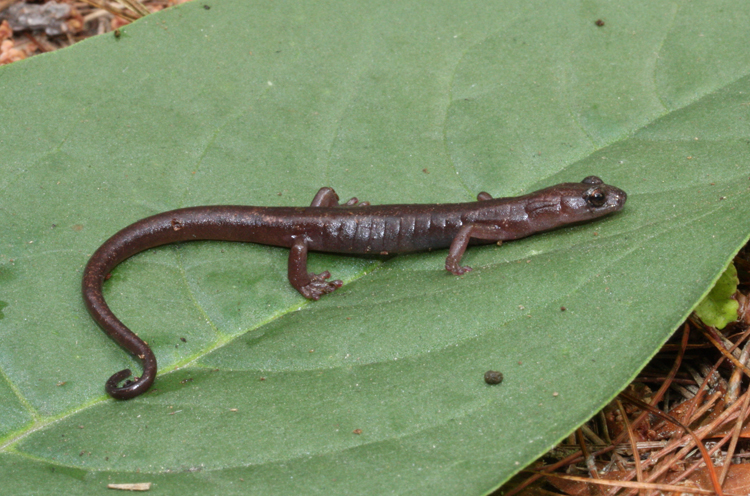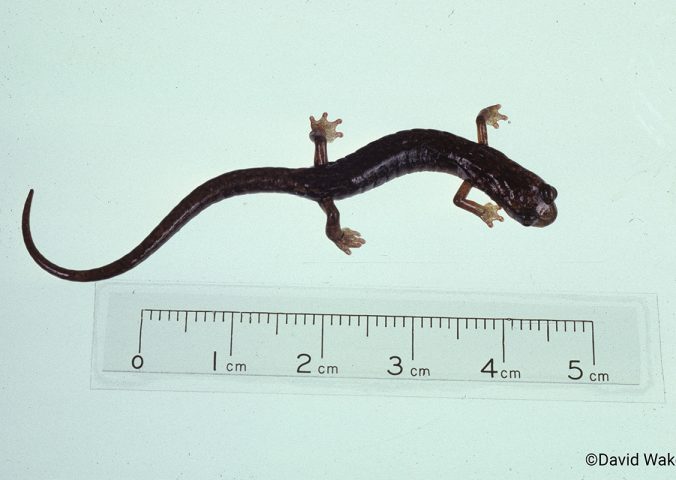About
The Critically Endangered pigmy splayfoot salamander could be considered a master of defence, as it employs a number of different techniques to ward off predators.
This species has the remarkable ability of caudal (tail) autotomy, where it is able to self-amputate the end of its tail to evade a predator. Amazingly, these salamanders can regrow the tail later! Moreover, the pigmy splayfoot salamander can produce noxious skin secretions which deter predators. These secretions can be associated with aposematic skin colouration (striking warning signs), which allows predators to know that the pigmy splayfoot salamander is an unpalatable prey item.
This species is part of the Plethodontidae, the largest salamander family, comprising almost two thirds of all known species. They are thought to have diverged from all other amphibian species over 100 million years ago, in the Early Cretaceous. They are as distantly related to all other amphibian lineages as humans are to elephants, and emerged when dinosaurs still roamed the Earth!
Unfortunately, all areas surrounding its habitat in La Joya, Mexico, are highly disturbed by extensive deforestation mainly from logging, urbanization and agriculture. Between 2003 and 2005, the forest habitat area available to this species was halved due to the expansion of mining activity. The remaining habitat was only around 15 hectares in 2004, which is equivalent to around the total size of 11 football pitches! The species is protected by Mexican law under the “Special Protection” category, but the species is not found in any protected areas.
- Order: Caudata
- Family: Plethodontidae
- Population: Moderately abundant
- Trend: decreasing
- Size: 75mm
EDGE Score
Distribution
This species is known only from La Joya in central-western Veracruz, Mexico, at an altitude of 1,200 metres above sea level.
Habitat and Ecology
This species lives in bromeliads in pine-oaks and cloud forests in subtropical or tropical moist montane forests and caves.Their behaviour is partially terrestrial but also arboreal. Offspring hatch from their eggs as miniature adults.

